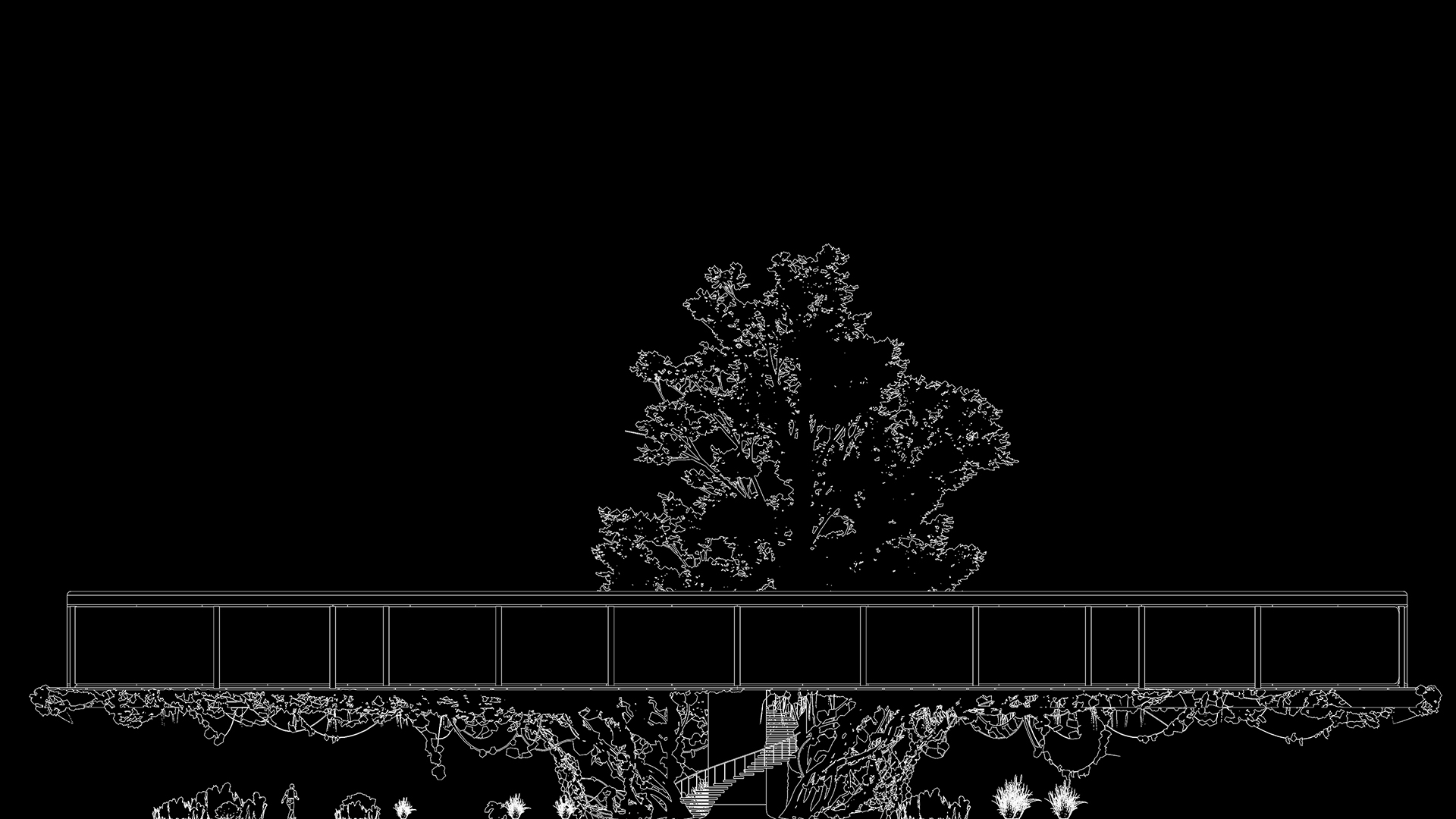THE SNOWFLAKE
2018University Project In collaboration with Deutsche Bahn AG.
The Snowflake is the result of a project having as its main theme the Future Forms Workspaces and supported by Deutsche Bahn AG, the largest railway operator and infrastructure owner in Europe.
The Snowflake is a single floor building conceived as a living organism. Its peculiarity is a passive integrated lighting system. The building presents indeed a radial ordered array of water columns, which host colonies of algae and bacteria able to generate bioluminescent light.
Designed as Think Thank, it offers the possibility of working in a spacious, acoustically isolated and, in its optimal form, self-sufficient environment. The structure is designed for 30 - 45 workers.
In the ground below the building are radially located 3 equal-sized fish tanks. The excrements produced in the tanks are used to produce bio-mass, which will then be used to feed the algae and the bacteria hosted in the columns.

It tends to remind us of the individual's dependence on nature and his need, forgotten, to constantly interact with it. The snowflake wants to evoke, with its name, the lightness of the building itself. The three concrete supports on which the building rests are in fact covered by climbing plants, which, by growing, make the supports vanish and make the building itself appear to float on a voluminous mass of leaves.








The roof and the water.
Like all organisms, even the snowflake involves the use of water at the center of its life system. The rainwater is in fact channeled, through a system of pipes, and conducted to four spots:
1 - toilets, where it is used as black water
2 - the kitchen, where it is used for hygienic and cleaning purposes
3- to the columns columns, in order to return the water.
4 - in the three tanks below the building.



The columns of bacteria.
The same canalization procedure is applied to the bioluminescent columns, which are connected to each other starting from the underlying tanks.
Two forms of organisms are possible:
- Vibrio Harvey bacterium
- Alge Dynoflagellate
The first are fed with the food remains and with the fish excrement, converted in biomass. The alge instead need a mechanical stimulus to generate light, which would be guaranteed by a system of fans integrated into the columns. Unlike incandescent light, bioluminescent light does not emit heat and therefore has no influence on the surrounding ambient temperature.



Plan and elevation

